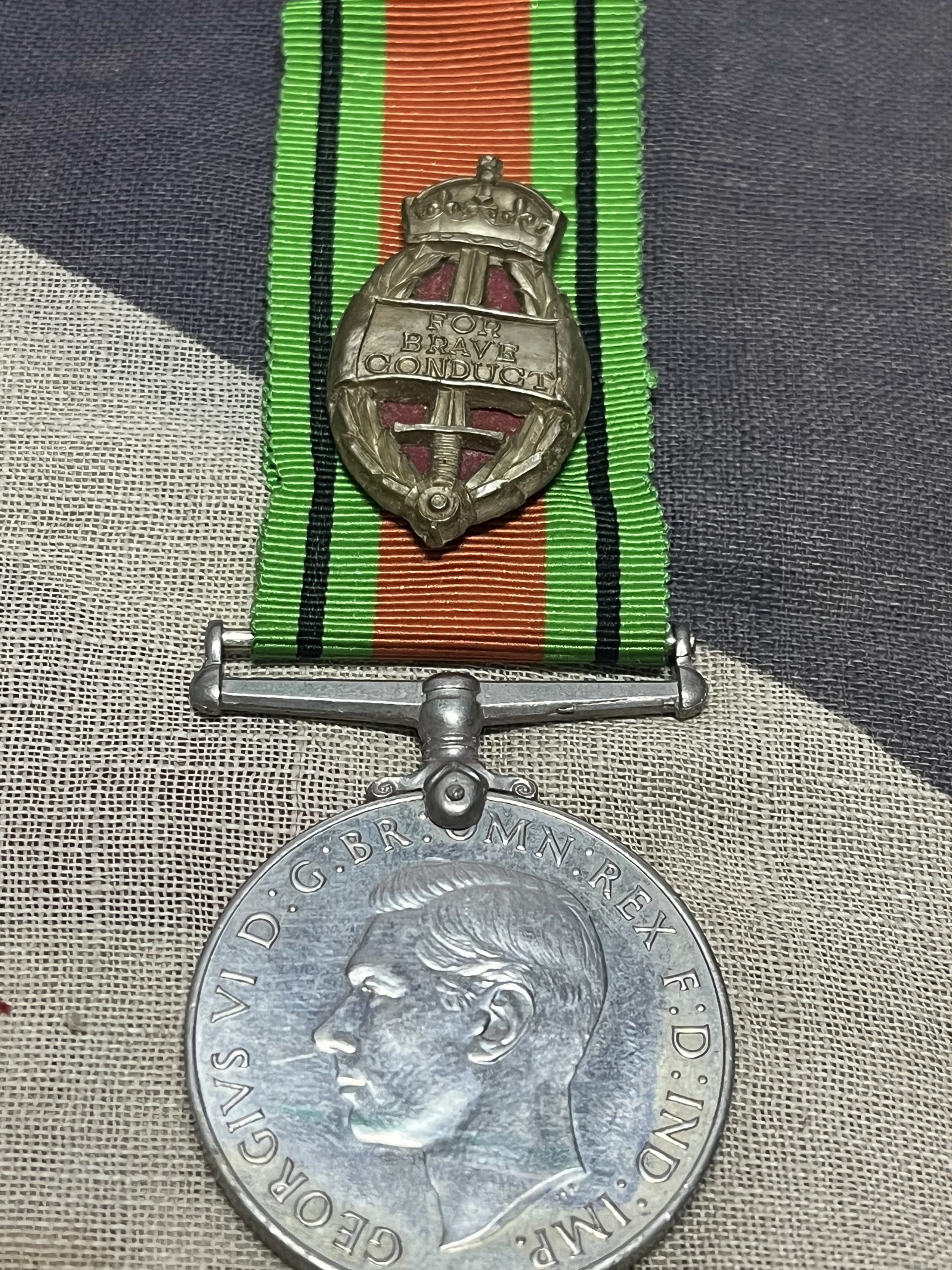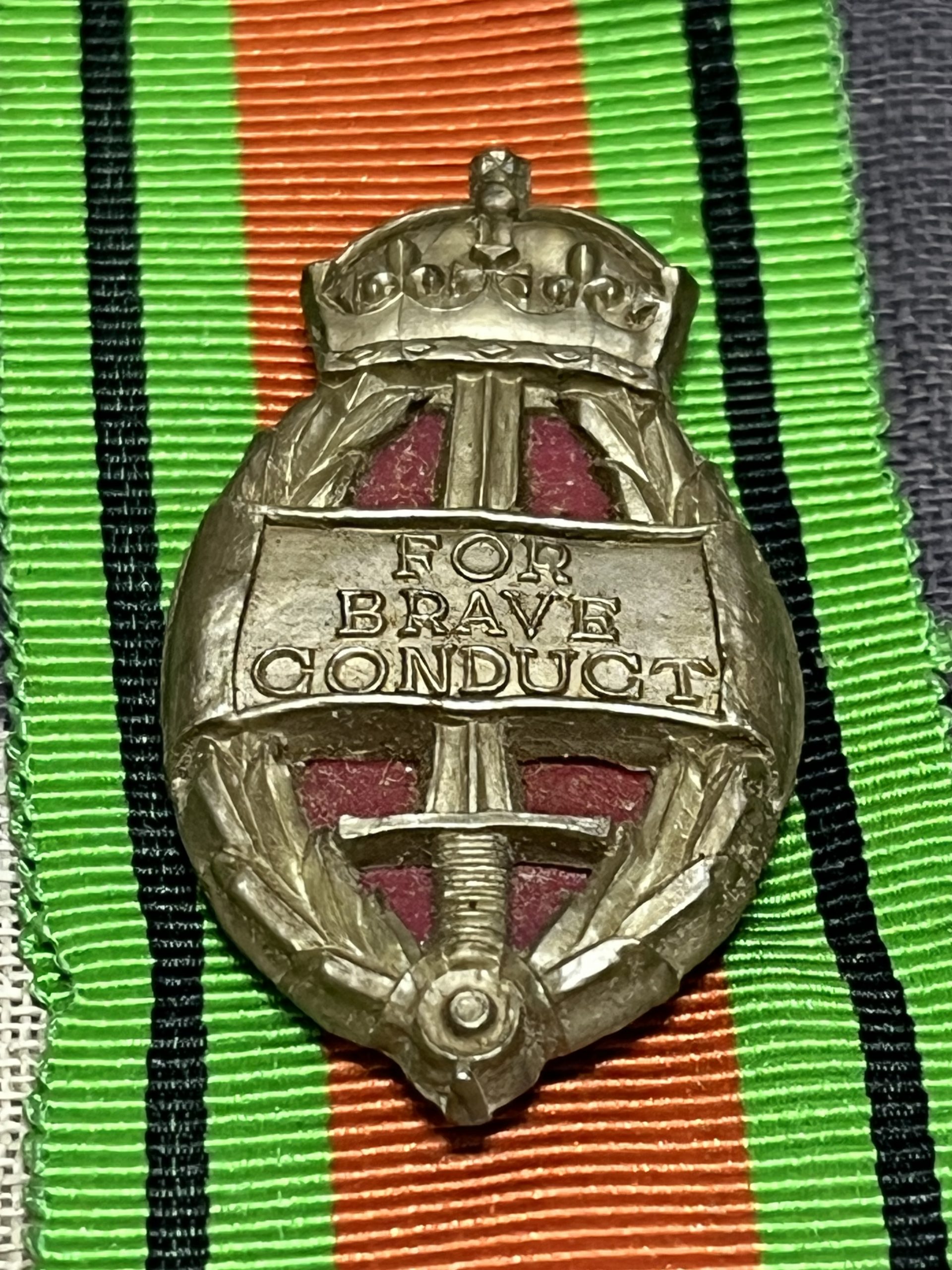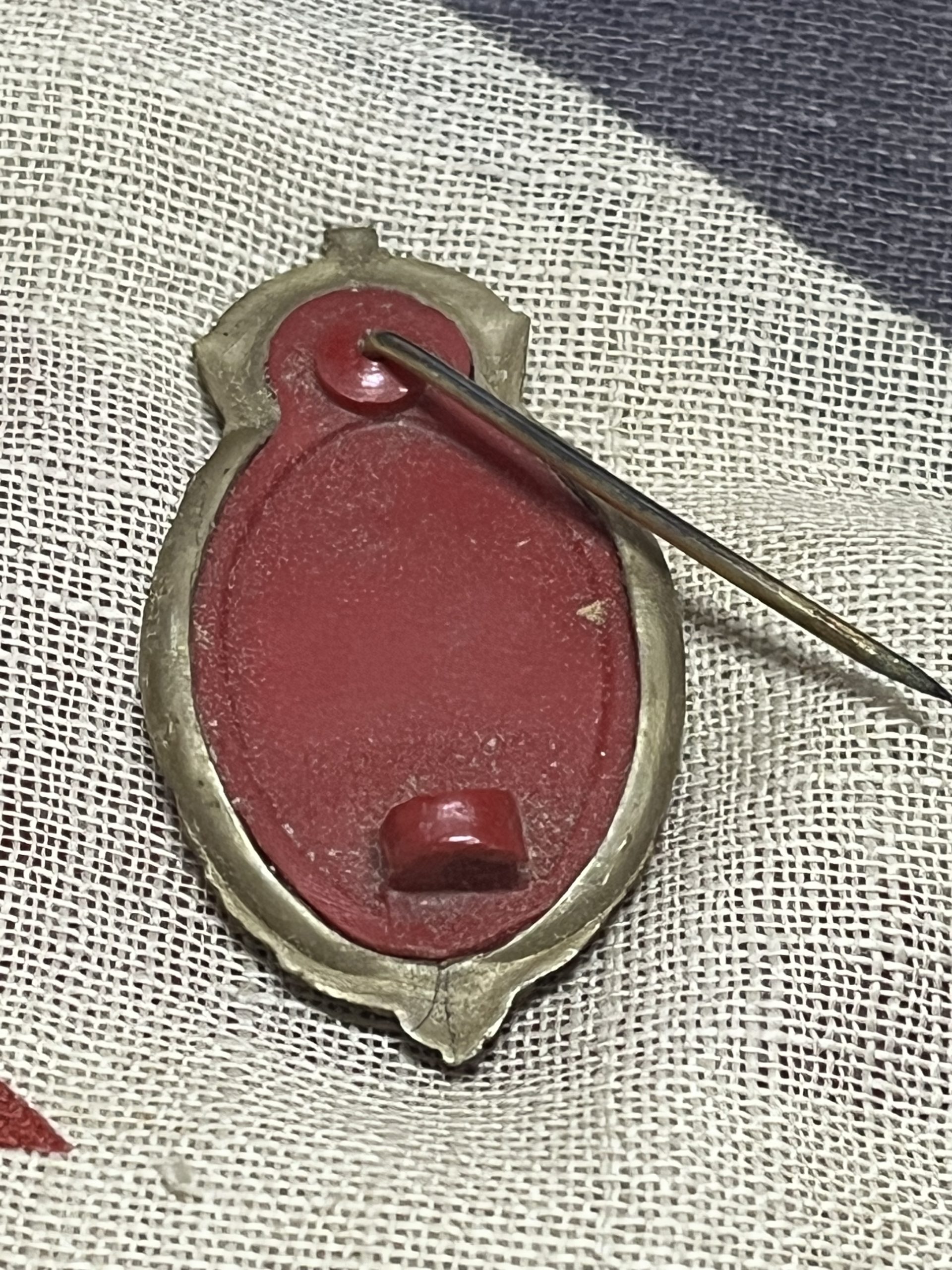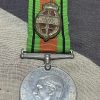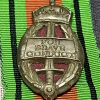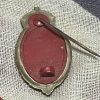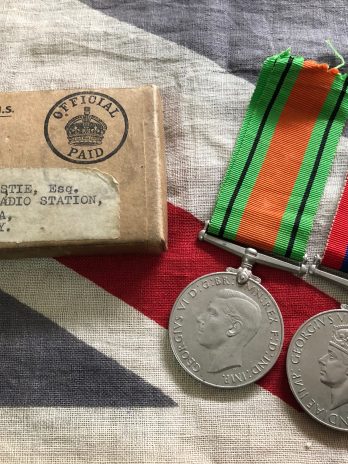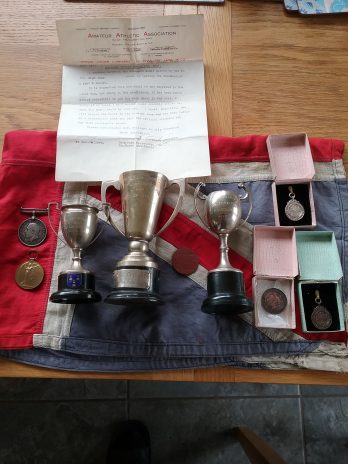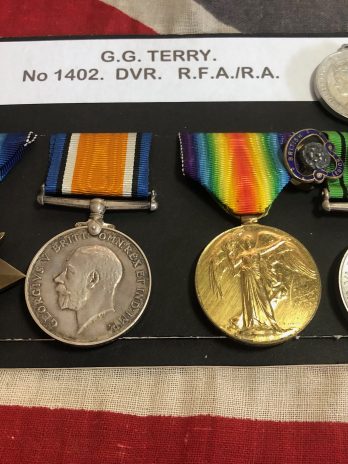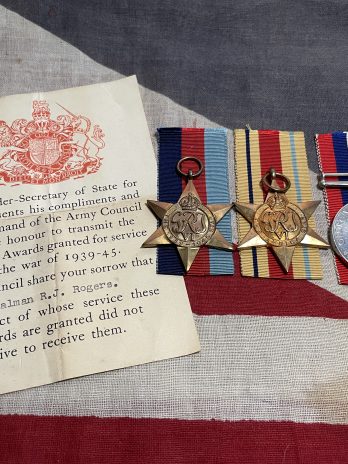WWII Defence Medal with Brave Conduct award.
The Queen’s Commendation for Brave Conduct, formerly the King’s Commendation for Brave Conduct, acknowledged brave acts by both civilians and members of the armed services in both war and peace, for gallantry not in the presence of an enemy. Established by King George VI in 1939, the award was discontinued in 1994 on the institution of the Queen’s Commendation for Bravery.
It represented the lowest level of bravery award in the British honours system, alongside a mention in dispatches. There is no entitlement to post-nominal letters.
Before 1943 there was no physical award other than a card certificate presented to the recipient. An example of a World War II ‘Commended for Brave Conduct’ certificate (left) gives the details of the recipient and the date of the London Gazette announcement
From 1943 a gold and red coloured plastic pin-backed badge was issued to civilian recipients, bearing the design of an upright sword in a wreath, surmounted by a crown. The badge, intended for everyday wear in civilian dress, was 38mm (1.5 in) long by 20mm (0.79 in) wide and was designed by George Kruger Gray, CBE. Normally each recipient received two badges in a small red cardboard box.
From 1946 the plastic badge was replaced by a silver metal laurel leaf for civilians, with a bronze oak leaf issued to armed forces personnel (including merchant seamen commended in time of war). The bronze oak leaf insignia was identical to that awarded to signify a Mention in Dispatches. The devices were worn on the ribbon of the appropriate campaign medal, usually the Defence Medal for civilians and War Medal for servicemen, or directly to tunic or jacket if no medal had been awarded. Devices for commendations for post 1945 campaigns could be worn with the appropriate campaign medal if received.
The medal has an original silk ribbon and the badge with pin and catch are all fully intact.


